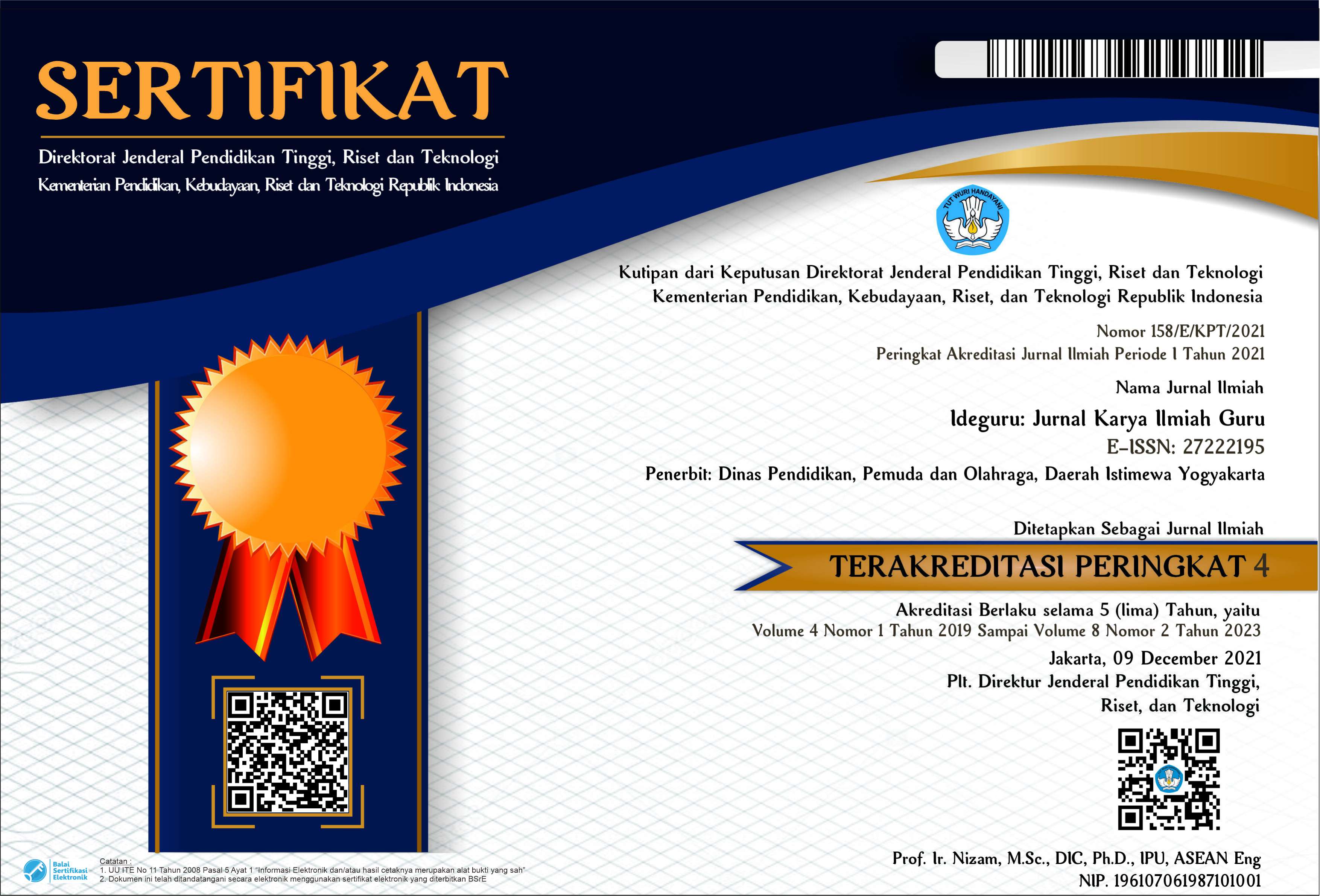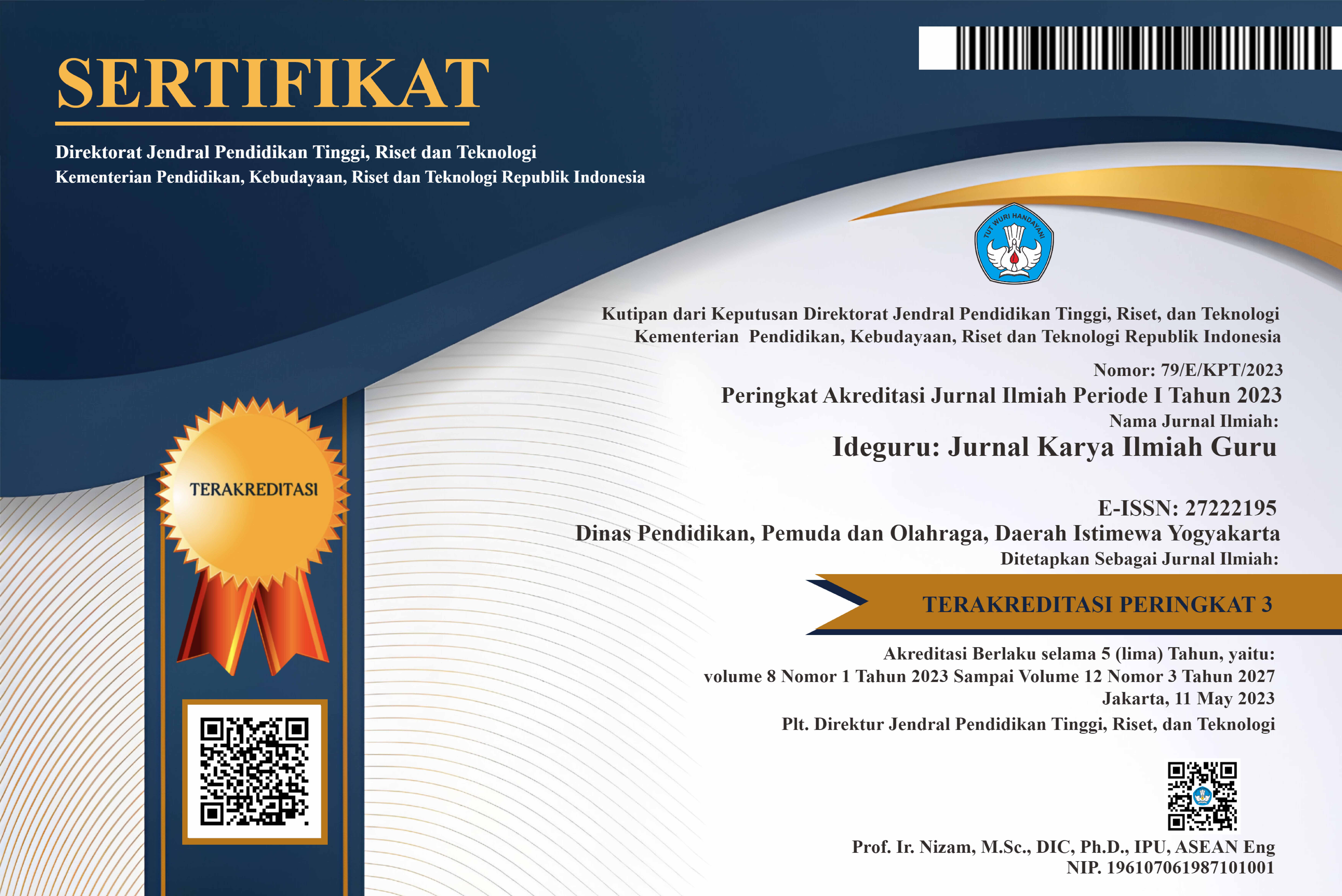Blended Learning as a 21st Century Learning Model
Abstract
The purpose of this study is to describe the development of the learning paradigm, the concept of technology-based learning, and the application of blended learning as a 21st century learning model. Information and communication technology is progressing very rapidly. The largest active users of information and communication technology are millennials and generation z. Teaching millennials and generation z is a challenge for teachers. The standard way of face-to-face teaching and learning can no longer be maintained, teachers must develop various strategies, methods, and learning models to present learning activities that are in accordance with the characteristics of millennial students. Teachers are also required to master technology in order to use e-learning as an alternative to learning. However, both methods each have weaknesses. Blended learning is an alternative choice because it combines the advantages of face-to-face learning and the use of e-learning. The existence of information and communication technology is utilized, but does not eliminate the teacher's touch through face-to-face learning. Blended learning is learning that combines learning delivery strategies using face-to-face activities, computer-based learning (offline), and online computers (internet and mobile learning). Blended learning can be applied without any specific limitations on the percentage of face-to-face and the use of computer or internet technology carried out synchronously or asynchronously. In designing the learning design the teacher can determine the percentage of internet utilization both online and offline. The results of the blended learning learning process are effective because they are able to overcome the weaknesses of the face-to-face learning model which is dominated by teachers, and the weaknesses of e-learning which only relies on communication technology.
PDF Downloads
Copyright (c) 2022 Dyah Puspitarini

This work is licensed under a Creative Commons Attribution 4.0 International License.

 DOI:
DOI:














